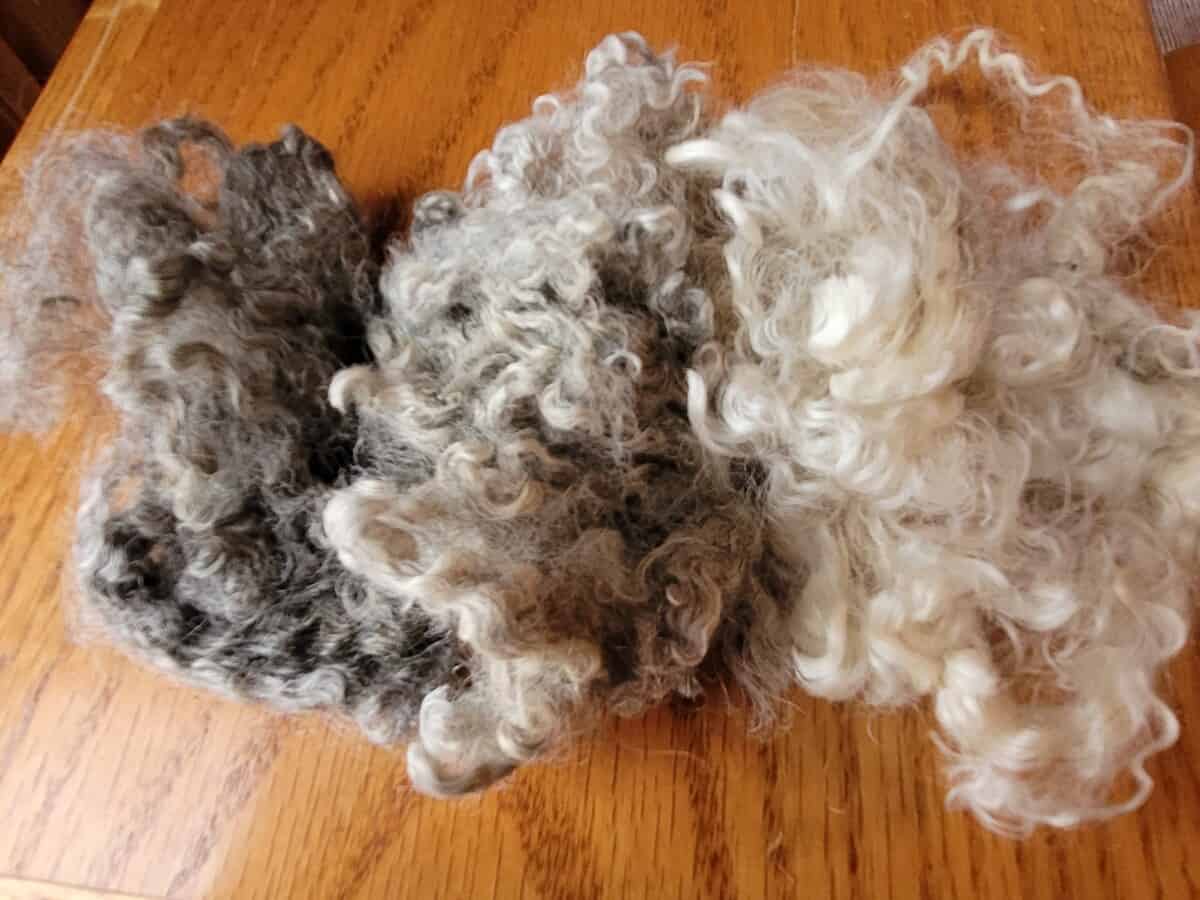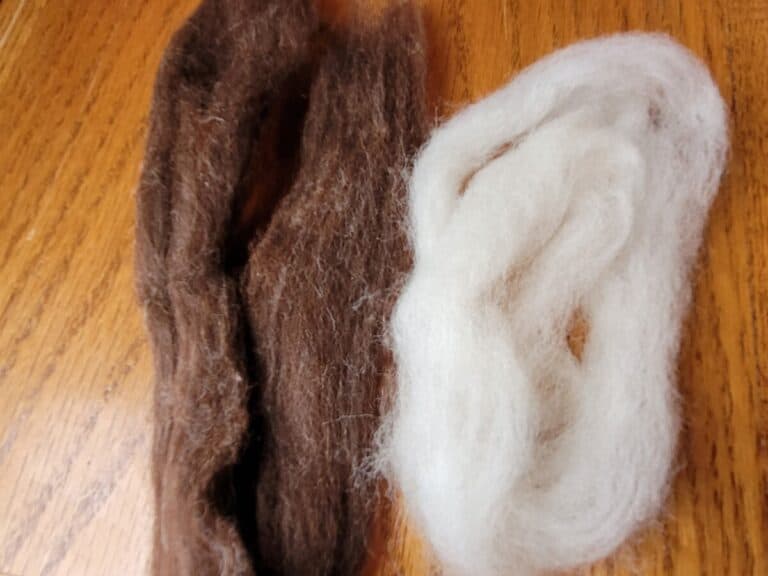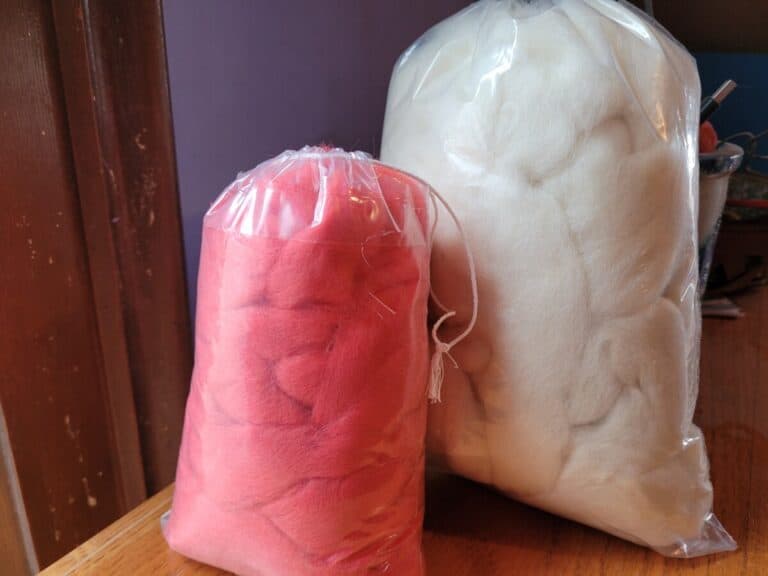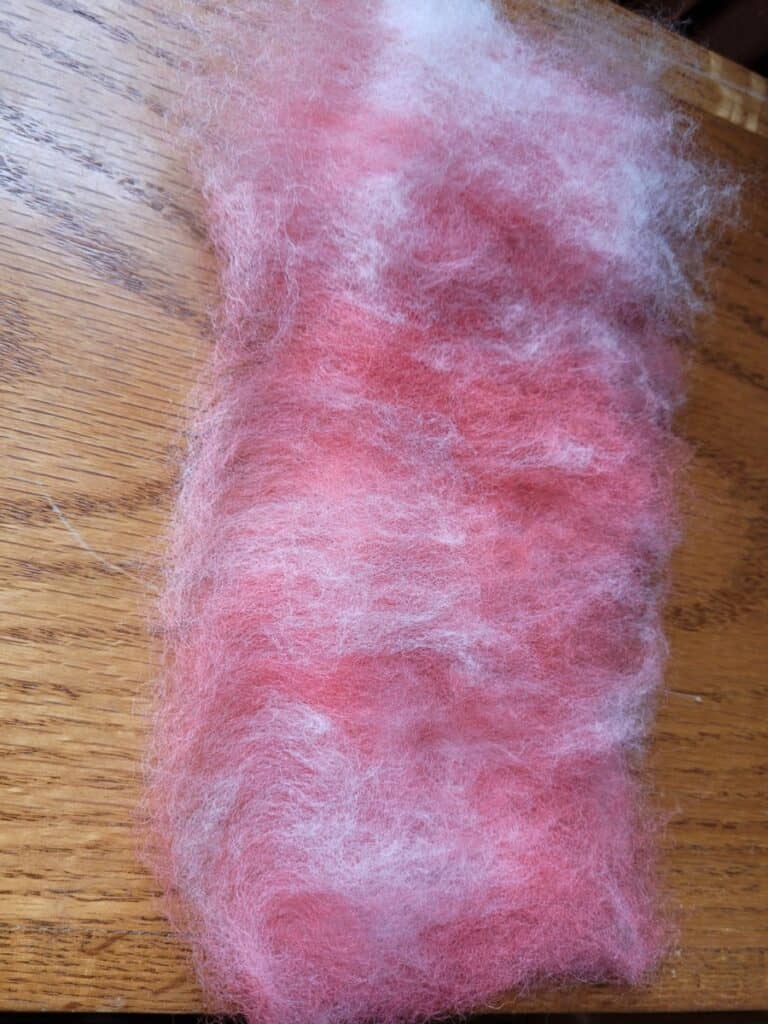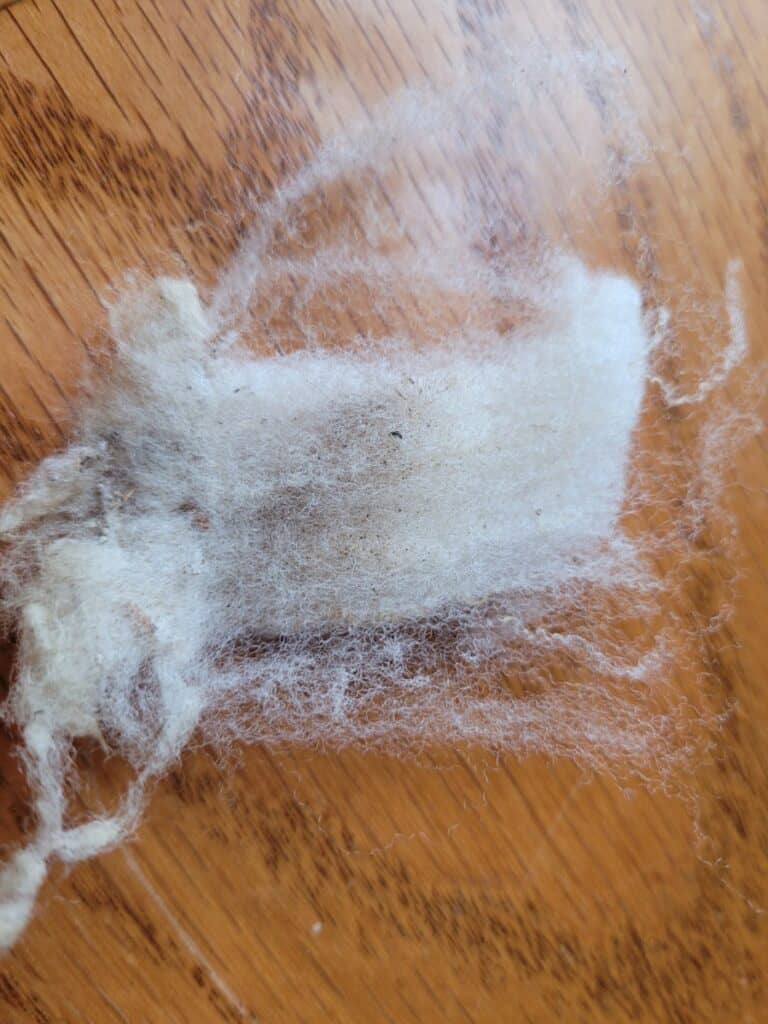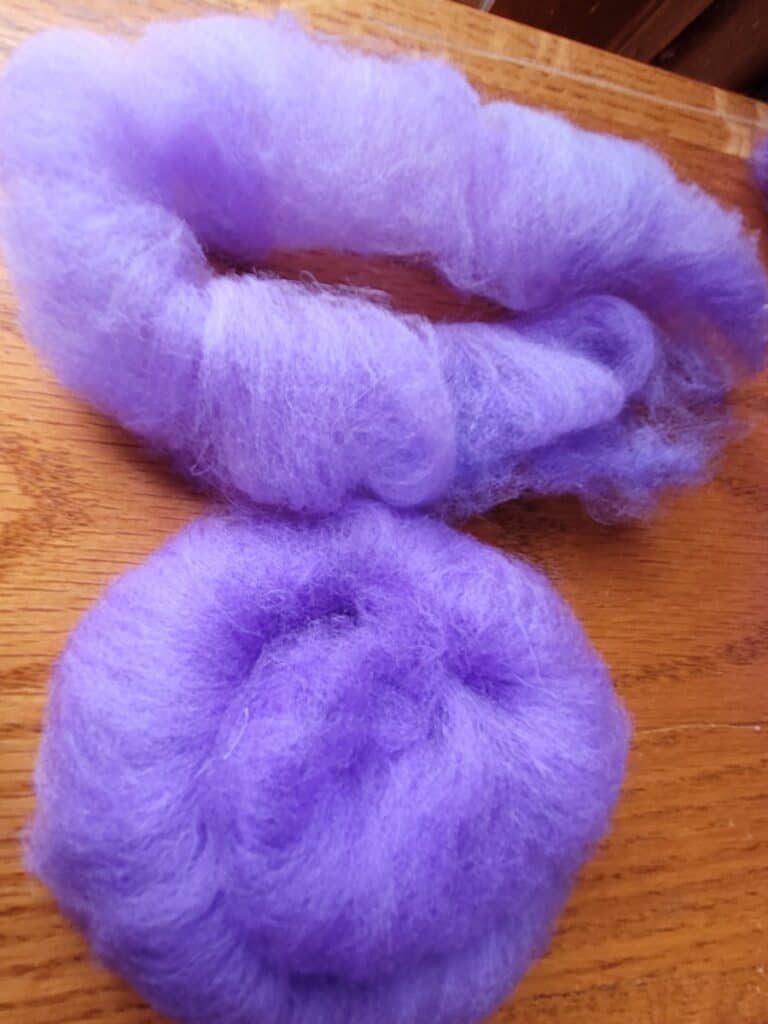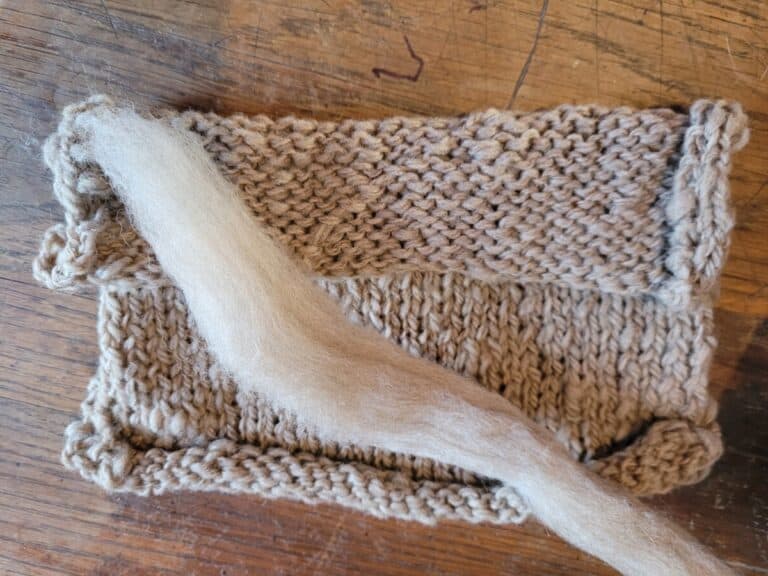Choosing Mohair For Handspinning
Mohair is coming up in popularity, as a wonderful fiber with luster, strength and that beautiful halo! It’s no wonder handspinners are looking into using mohair!
What type of mohair should you order for handspinning mohair yarn?
Do you need to get mohair roving or should you get some fleece, if so how much do you need and of what grade?
The ideal mohair for handspinning is kid mohair, which is less than 27 microns and will give you the softest yarn. Use mohair roving or combed top if you want ready to spin mohair or choose mohair fleece or locks, if you are willing to wash and comb or card the mohair yourself.
7 Tips For Easily Spinning Mohair Into Yarn gives you a list of things you can do to make sure your mohair yarn is soft!
Which mohair should you order?
You need to take a look at the options of what form your mohair can come in and the grade of mohair you can order.
In case you are not aware of it, mohair comes in different preparations as well as different levels of fineness, just like wool.
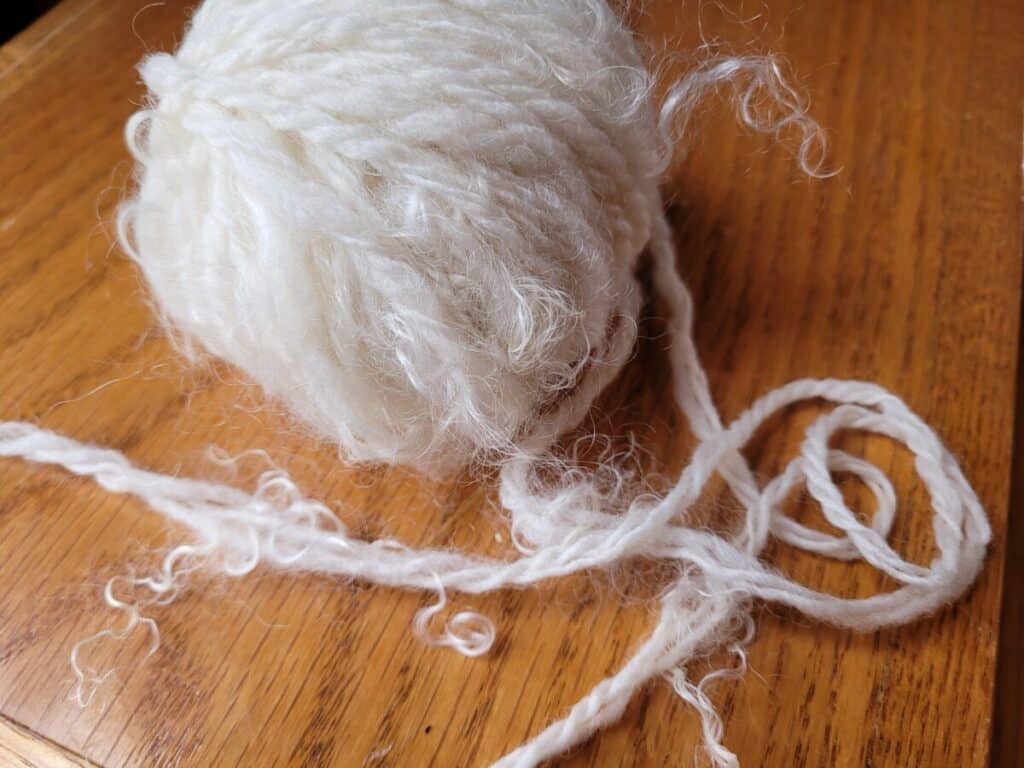
Mohair roving is ready to spin
The easiest way to get started with spinning mohair is to order roving, which is ready to spin fiber.
All you would need to do to use this mohair is to open the bag and start spinning!
I searched “mohair roving” and got quite a few results, both fiber stores and farms that have roving for sale. Most have kid mohair, but one did have goatling.
If you want to wear the yarn you spin, get kid mohair roving, just mohair roving may not be fine enough for garments.
Read the description, the grade (kid, goatling or adult) of mohair is a big deal regarding final use of the fiber, so it will be listed.
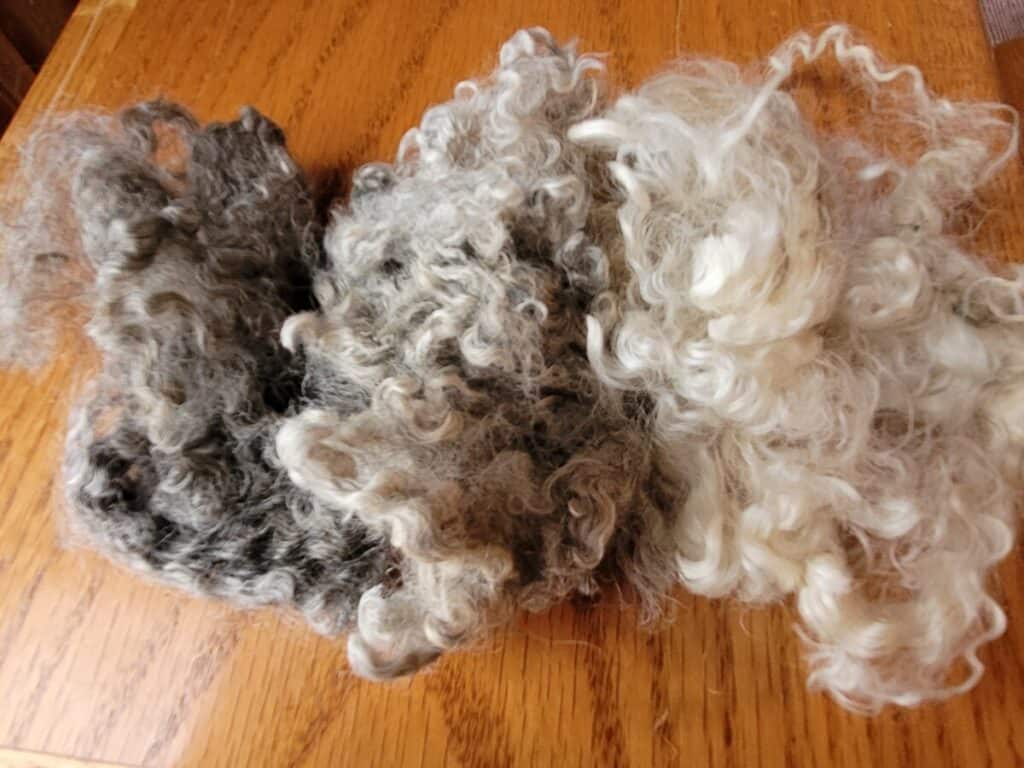
Mohair fleece, raw or washed
Mohair fleece is most often sold as a small section of the entire fleece. This fiber is right off the goat and is sold based on weight.
Normally, the fleece is sold by the ounce, so if you want 4 ounces of mohair to work with you would order 4 of the 1 ounce sections of mohair.
Mohair fleece may be washed or unwashed, it will be specifically listed in the description and if you are not sure, just email the seller.
Washed fleece will be all useable fiber, since all of the grease has been washed out.
I washed a small amount of the mohair I just purchased and it was super easy to wash. It started out fairly clean and washing it really brought on the shine!
If you don’t have a way to comb the mohair after washing it, then buying roving may be your best option, since all the preparation is done for you.
How To Wash Mohair gives you the details to get your raw mohair clean and ready to use!
Unwashed mohair will lose 30-35%
Raw mohair will lose 30-35% of it’s weight while being washed, so you’ll have to order 30-35% more than you need.
For example, if you want to end up with 4 ounces of washed mohair, you have two options, order more or work with a bit less than 4 ounces washed mohair.
If you order 5 ounces of raw mohair, you’ll end up with 3.25 ounces washed mohair.
If you order 6 ounces raw mohair, you’ll end up with 3.9 ounces of washed fiber to work with.
If you order 7 ounces of raw mohair, you’ll end up with 4.55 ounces of washed mohair.
You’ll need to pick out odd bits
Since you are working with a raw, fresh from the goat, fiber, you’ll likely come across some “odd bits” that need to be picked out before washing or combing.
The more VM (vegetable matter) or anything else that you pick out now, the less work you’ll do later when you are spinning.
There can also be little sections of too short fleece or second cuts, both of which need to be separated out from your main fiber.
How To Prepare Mohair For Handspinning (Combing or carding) shows you what fiber prep you need for your mohair to help you spin the yarn you want.
There will be stained locks
Chances are there will be some stained sections of the fleece.
These stains could be dirt, if so they will wash out when you scour the fleece, or urine stains which are not likely to wash out.
Any stained locks that will not wash clean can easily be used for dyeing or used as a core yarn for corespinning if the stain bothers you.
If you are buying mohair and need it to be pure color, no stains, for your project, buy washed mohair.
You can also order more than you think you’ll need so you can separate off the stained locks and still have enough white for your project.
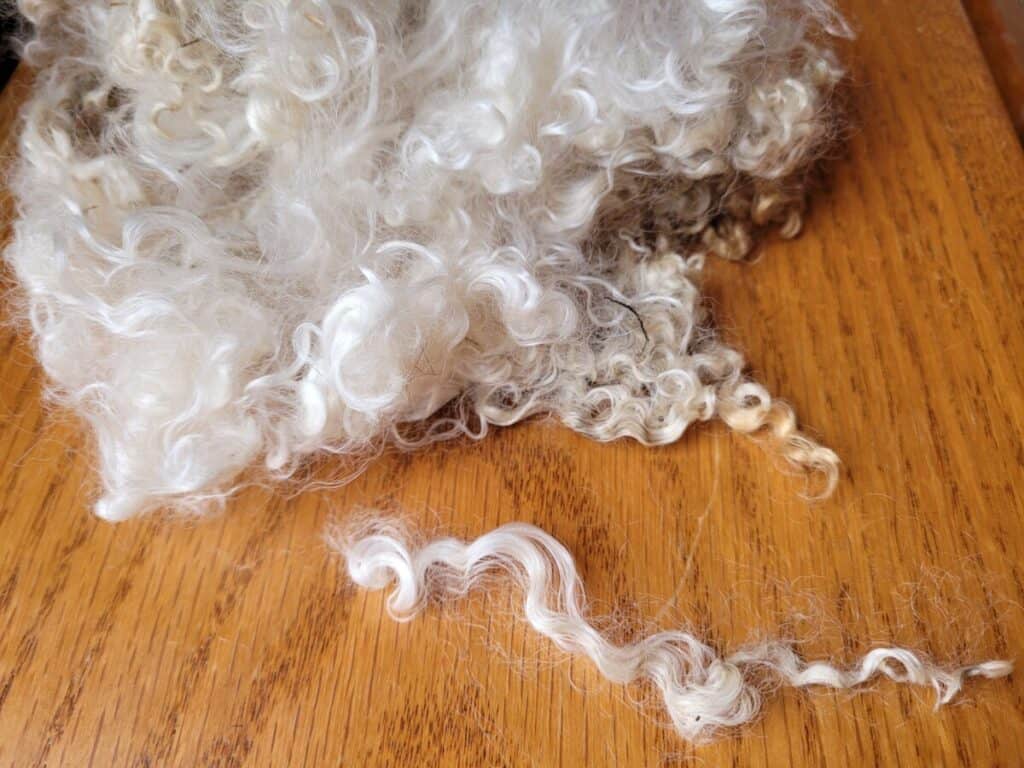
You can buy washed mohair locks
Another popular way to sell mohair is to sell the locks, which are the separated out ringlets of fiber.
Locks will be more expensive than fleece, mainly because the seller did more work to get the fiber ready for you and when buying locks all of the not so great parts of the fleece have already been taken out. This is the nice stuff only!
The main market for locks will be other crafters, folks who are making dolls or something similar and need perfection, this is why locks are pricey.
The good news with locks is that they are ready to use, so will be super easy to work with, but most folks looking to spin mohair would buy fleece or roving, instead.
Mohair grades or categories
What do I mean by grade of mohair? All mohair is not the same! You need to match the mohair you order to the purpose of your spinning.
The mohair I ordered is kid mohair, meaning it is fine and a next to the skin appropriate fiber.
I ordered my mohair from a farm with mohair from a few different goats for sale, all of which had micron counts in the 24-25 range.
The key here is kid mohair, which despite the name is not from kids, as in young goats, specifically, it is from goats, regardless of age that have a finer fiber micron.
Mohair goats tend to get coarser fiber as they age, but not all goats start out with the lower micron count fiber, even as a young animal.
This is where the name “kid mohair” is a bit confusing. It is a category of based on the fineness of the fiber not the age of the goat the fiber came from.
The best way to know if you are getting kid mohair or not is to buy mohair with a known micron count, then choose the fineness of the mohair needed for your project just like you would pick out a wool based on micron count.
As a guideline to use when buying your mohair:
- kid mohair is under 27 microns
- goatling or yearling mohair is from 27-30 microns
- adult or strong mohair is over 30 microns
This is the easiest to understand grouping that I have found that divides the different grades of mohair from a handspinner’s point of view.
Mohair Producers NZ has a categorization system with 5 main categories each having a sub section based on fiber length, if you want to check it out, as well.
If you want to be sure that you will like the mohair yarn you can spin, as far as softness goes, order a kid mohair for your handspinning fiber.
If you are looking for a bit of a more resilient fiber, go with mohair from an older goat, especially if you are looking to make warp or a durable rug.
The stronger mohair will be tough wearing yet still be easy to dye like all mohair.
This would also be the mohair that is used to make more durable, hard use items like a cinch, which is the belly band for a saddle on a horse.
If you want to learn more about mohair from a production standpoint, read Angora Goats: A Shear Delight, a wonderful 12 page booklet on raising Angora Goats by Texas Department of Agriculture.
Resources:
The Joy of Handspinning, types of mohair with type name and micron counts

